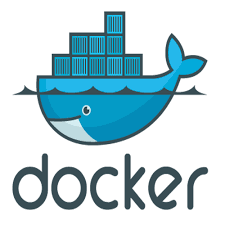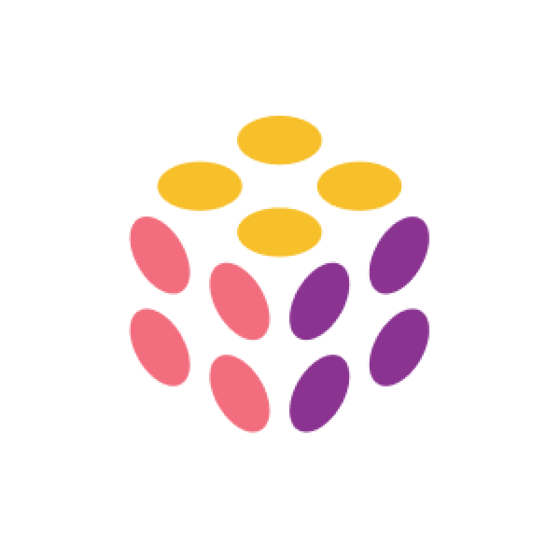5 Best Data Warehouse Software Shortlist
Here's my pick of the 5 best software from the 20 tools reviewed.
Our one-on-one guidance will help you find the perfect fit.
Disparate data can result in inconsistent and even conflicting information, which can lead to poor decision-making. So how can you centralize your data to facilitate timely business intelligence (BI) and insightful reporting? The right data warehouse software solution can help.
Below, I’ve put together a list of the top data warehouse software solutions. I’ve included an explanation of why I chose them as well as a summary of their key features to help you make an informed decision.
What Is Data Warehouse Software?
A data warehouse is a central repository used for data storage. It collects and aggregates data from sources like databases, transactional systems, and applications.
Data warehouse software provides tools for extracting, transforming, and loading (ETL) data from disparate sources, as well as for managing and analyzing stored data. This enables companies to perform data analysis and identify trends that can inform decisions.
Best Data Warehouse Software Summary
| Tool | Best For | Trial Info | Price | ||
|---|---|---|---|---|---|
| 1 | Best for handling demanding analytical workloads | Free trial available | Pricing upon request | Website | |
| 2 | Best for creating interactive data visualizations | 15-day free trial | From $75/month | Website | |
| 3 | Best for comprehensive data integration | 30-day free trial | Pricing upon request | Website | |
| 4 | Best for scalable cloud-based data warehousing | Free plan available | From $99/month | Website | |
| 5 | Best for a range of data pre-built connectors | Free trial + free demo available | Pricing upon request | Website |
-

Docker
Visit WebsiteThis is an aggregated rating for this tool including ratings from Crozdesk users and ratings from other sites.4.6 -

Pulumi
Visit WebsiteThis is an aggregated rating for this tool including ratings from Crozdesk users and ratings from other sites.4.8 -

GitHub Actions
Visit Website
Best Data Warehouse Software Reviews
Amazon Redshift is a fully managed, cloud-based data warehouse solution that allows you to analyze structured and semi-structured data at scale.
Why I picked Amazon Redshift: I put Amazon Redshift on this list because it can analyze enormous amounts of data. It combines columnar data storage with Massively Parallel Processing (MPP) technology, which distributes tasks across many nodes.
Amazon Redshift Standout Features and Integrations:
Features that differentiate Amazon Redshift include its zero-ETL approach, which allows for data querying in near real time across various sources. This means you don’t have to build or maintain ETL data pipelines. Concurrency Scaling is another great feature, which automatically adds new clusters to support thousands of concurrent users and queries.
Integrations are available natively with other AWS services like Amazon S3, Amazon DynamoDB, and AWS Glue. You can also query data from over 3,500 third-party data sets in the data marketplace.
Pros and cons
Pros:
- Flexible pricing based on usage
- Offers built-in machine learning (ML) capabilities using SQL
- Built to handle massive amounts of data with relative ease
Cons:
- Moving data in and out may require additional processes
- Some users report a lack of detailed documentation
ClicData is a cloud-based data management platform that allows businesses to centralize their data and generate interactive data visualizations.
Why I picked ClicData: ClicData deserves a spot here because it offers powerful data visualization features. It includes over 100 dashboards and reports for a range of use cases, from marketing and finance to sales and project management. You can also choose from over 70 widgets and customize your dashboards to display the exact information you need.
ClicData Standout Features and Integrations:
Features that stood out to me about ClicData include its data management functionalities. You can use its native connectors or data loaders to import structured and unstructured data into one central place. I also found the drag-and-drop Data Flow module fairly straightforward to use for data cleansing and preparations.
Integrations include over 250 pre-built data connectors to services like AWS, Basecamp, Confluence, Salesforce, HubSpot, Google Analytics, MongoDB, and Oracle.
Pros and cons
Pros:
- Receives frequent product updates
- Offers iOS and Android mobile apps
- Includes over 100 dashboards and reports
Cons:
- Doesn’t offer native connectors to some popular services like Stripe
- Responsive and knowledgeable customer support team
Informatica is a data integration tool that uses an ETL architecture to ingest data from different sources and consolidate it into a centralized location.
Why I picked Informatica: I put Informatica on this list for its data integration capabilities, which allow you to ingest data using hundreds of pre-built data connectors. The platform also includes APIs that you can use to integrate on-premise and cloud applications without coding.
Informatica Standout Features and Integrations:
Features that make Informatica a good data integration tool include its advanced data cleansing and transformation capabilities. These features help maintain the integrity and consistency of your data sets. I found the operational dashboard particularly helpful, as it helped me monitor project utilization and potential performance issues in one location.
Integrations are available through pre-built data connectors to services like AWS, DataSift, Google BigQuery, JD Edwards, Microsoft Azure, MongoDB, Qlik, and Salesforce.
Pricing: Pricing available upon request
Pros and cons
Pros:
- Has an intuitive and user-friendly interface
- Includes an option to transform data using SQL or Python
- Offers an extensive range of pre-built data connectors
Cons:
- Some users report slow performance with the web app
- Initial setup requires a high degree of technical expertise
IBM Db2 Warehouse is a scalable data warehouse designed for advanced, real-time analytics. It allows you to store and analyze data across different sources.
Why I picked IBM Db2 Warehouse: I picked IBM Db2 Warehouse because it offers a robust architecture that can easily scale analytics workloads to meet fluctuating demand. With its parallel query engine and caching technology, you can expect fast performance and lower storage costs.
IBM Db2 Warehouse Standout Features and Integrations:
Features that make IBM Db2 Warehouse stand out from its competitors include its integration with watsonx.data — a data store that uses AI to optimize workloads and reduce data warehouse costs. I also liked that IBM Db2 Warehouse integrates with business intelligence tools like Tableau, which made it easy for me to build all kinds of reports.
Integrations are available natively for various IBM products, including InfoSphere Data Replication, Segment, and Data Studio. Integrations are also available for BI tools like Microsoft PowerBI and Google Looker, as well as ETL tools like DataStage and Informatica.
Pros and cons
Pros:
- Supports a range of data types and sources
- Integrates with popular data science and analytics tools
- Offers flexible on-premise, cloud, or hybrid deployments
Cons:
- Its steep learning curve means that some training is required
- Can be complex to set up, especially for small businesses
Fivetran is a data integration platform that allows businesses to move and replicate data from disparate sources into a centralized location like a data warehouse.
Why I picked Fivetran: I picked Fivetran because it offers a range of pre-built data connectors that connect to a wide variety of sources. Whatever tool your company uses, Fivetran likely has a connector for it. These connectors require minimal configuration, which cuts down on development time.
Fivetran Standout Features and Integrations:
Features that impressed me during my testing with Fivetran include its quick start data models that allow you to transform data in destinations like Snowflake and Redshift. This means you can quickly turn analytics-ready datasets into business insights. I also like that Fivetran offers data governance features, like access control and user provisioning.
Integrations include over 300 pre-built data connectors to platforms and services like Amazon S3, Marketo, HubSpot, MySQL, Oracle, SAP ERP, Salesforce, and Zendesk. It also integrates with data warehouses like Azure Synapse, Google BigQuery, and Snowflake.
Pros and cons
Pros:
- Integrates with popular data warehouses like Amazon Redshift
- Offers reliable data syncing (99.9% uptime across a million daily syncs)
- Has built-in data governance and security features like single sign-on (SSO)
Cons:
- Some users report slow customer support response times
- Can be expensive for small to medium-sized businesses
Other Data Warehouse Software Options
Here are some more data warehouse tools that didn’t make my top list but I think are still worth checking out:
- Google BigQuery
For ease of use for business users
- Oracle Autonomous Data Warehouse
For automating data warehouse processes
- Integrate.io
No-code data pipeline platform
- SAP Datasphere
For self-service analytics
- Snowflake
For on-demand scaling
- VantageCloud
For deploying AI initiatives
- Microsoft Azure Synapse Analytics
For building code-free data pipelines
- Qlik
For data warehouse automation
- Panoply
For end-to-end data management
- Cloudera
For unified data security and governance
- QuerySurge
For data validation and ETL testing
- Tableau Data Management
For streamlining data preparation tasks
- Vertica
For big data analytics
- Talend Open Studio
Open-source ETL tool
- Pentaho
For data flow orchestration
Other Software Reviews
- Guide To The Top 25 DevOps Tools
- Best IT Management Software
- Best Network Monitoring Software
- Best Asset Management Software For IT Teams
- Best Cybersecurity Software
Selection Criteria for Data Warehouse Software
Wondering how I came up with my list? Here’s a summary of the evaluation criteria I used to compile the best data warehouse software:
Core Functionalities
A data warehouse solution had to have the following core functionalities to make it on my list:
- Allows you to store different types of data across on-premises and cloud environments
- Automatically scales analytics workloads based on demand
- Enables you to integrate with popular BI tools like Power BI and Tableau
- Includes data connectors to popular platforms
- Provides self-service analytics capabilities
Key Features
I prioritized data warehouse solutions with the following key features:
- Data ingestion: Data resides in more places than ever. I looked for data warehouse solutions that are capable of ingesting and handling large volumes of data.
- Data querying: Data is only valuable if you can make use of it. Throughout my testing, I gave more weight to platforms with robust features for querying and analyzing data.
- Data connectors: These allow you to integrate data from different sources. Tools that offered a broad range of pre-built data connectors were more likely to be included here.
- Data security: I prioritized tools with advanced security features like always-on encryption and access controls to ensure data privacy.
Usability
Usability was another key consideration when I put together this list. While any platform will have an initial learning curve, you also don’t want your team spending a lot of time with a new tool and have little to show for it.
I was more likely to prioritize data warehouse software with intuitive interfaces and extensive documentation. Solutions with drag-and-drop functionality and customizable dashboards also earned bonus points.
People Also Ask
Here are some answers to frequently asked questions about data warehouses:
What’s the difference between a database and a data warehouse?
A database is a computer system that stores data in an organized manner. It’s designed to support transactional processing, which can include adding, updating, and deleting records for an application. A data warehouse is a system that extracts data from different sources into a central repository. It’s designed to support analytical processing for business insights.
What’s the difference between a data warehouse and a data lake?
A data warehouse is a repository that can hold structured and semi-structured data from disparate sources. Businesses typically use them to gain insights into their data. In contrast, a data lake can store a massive volume of data, including structured, semi-structured, and unstructured data. The downside is that storing data in its raw format without processing it can result in poor data quality.
Is a data warehouse an ETL tool?
No, a data warehouse isn’t an ETL tool. Extract, transform, load (ETL) tools are designed to gather data from different sources, transform it into a usable format, and load it into a destination like a data warehouse for analysis.
Conclusion
It’s not easy to make sense of your data when it’s siloed across disparate sources. But with the right data warehouse software, you can centralize your data and make it easier to analyze. Use this list to find a solution that meets your needs.
Subscribe to The CTO Club newsletter for more tech insights from industry experts.














